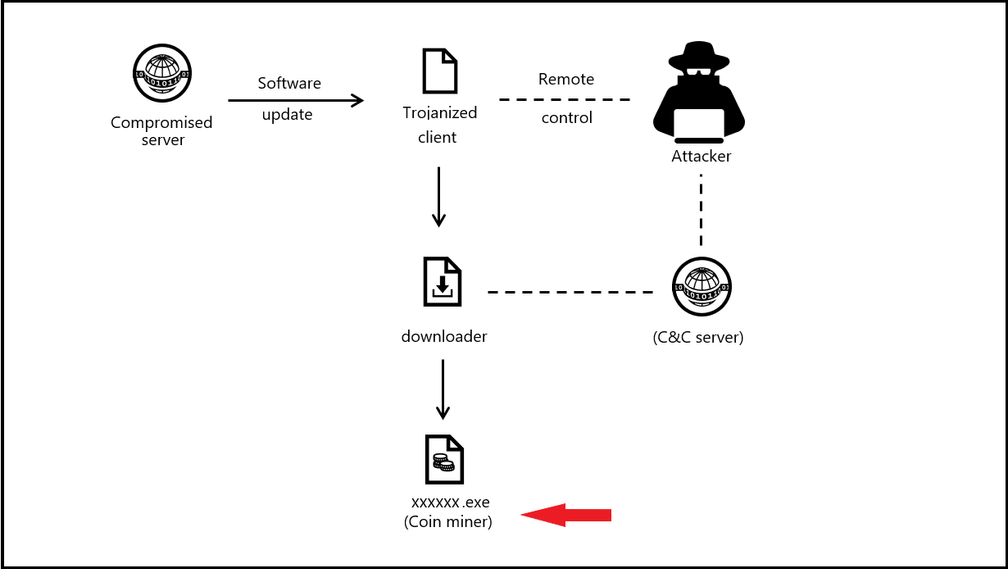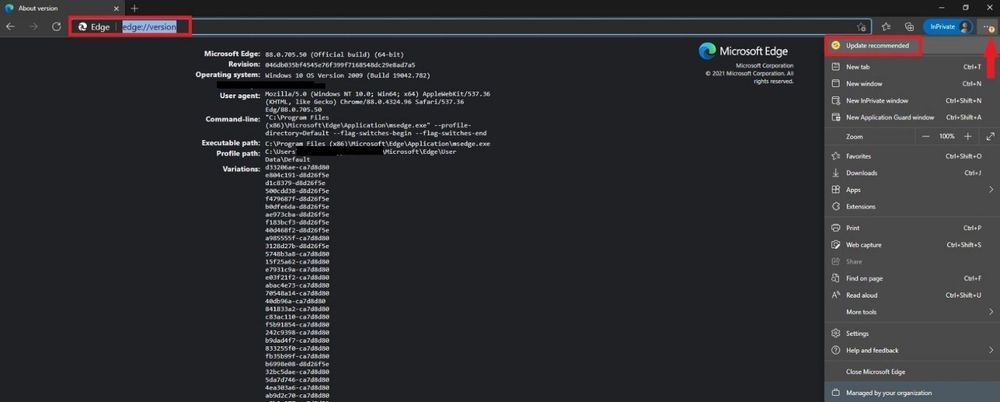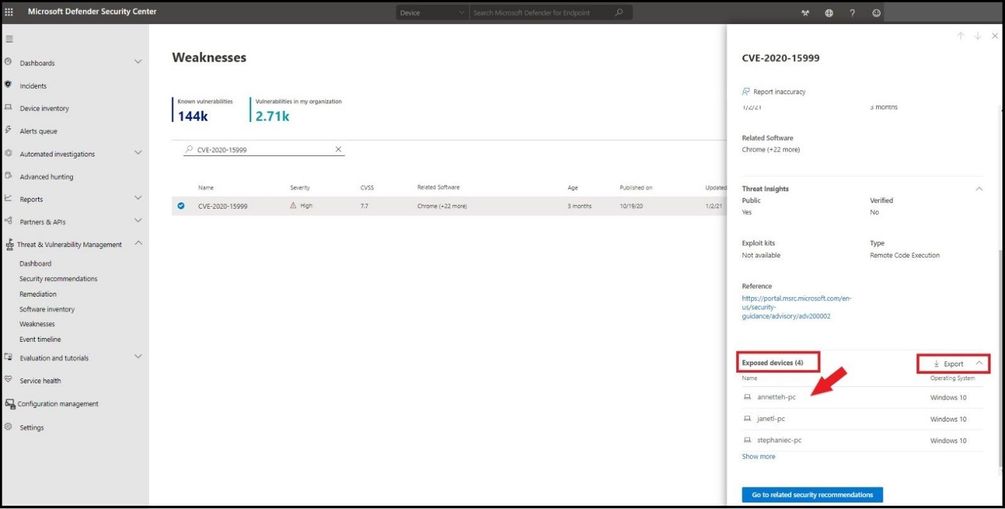This post has been republished via RSS; it originally appeared at: Core Infrastructure and Security Blog articles.
Introduction
This is John Barbare and I am a Sr. Customer Engineer at Microsoft focusing on all things in the Cybersecurity space. It has been a while since I have had time to sit down and write a security blog due to studying and making sure I passed the Microsoft certifications for an Azure Architect. With all that behind me, I'm back into blogging and wanted finish an article I started on several months ago around browser exploits and making sure you are safe and aware of how the attacks can occur.
Most people will argue the internet browser is most likely the weakest link on their machine in one aspect or another. In this blog we will take a deep dive and walk you through the various different types of exploits attacking browsers and more specifically how they are escaping the sandbox in chromium-based browsers. In a previous blog, I wrote about sandboxing and how safe you were from using containers in Microsoft Office documents, so this particular attack drew my interest right away. I felt users needed to know how to safeguard and be aware of this particular CVE (Common Vulnerabilities and Exposures). With that said, lets jump into this browser-based exploits and also provide some visualizations along the way.
Overview of Browser Exploits
To give a background of a browser-based exploit, I will first give an overview of a particular attack I have worked with and familiar with and how the victim can be unaware of its presence - cryptojacking. Cryptojacking takes place directly with a certain internet browser allowing it to use someone’s IT environment to then mine for cryptocurrency in a process called cryptomining. One of the biggest threats over the past several years has been cryptomining (a method in which transactions for numerous forms of cryptocurrency are confirmed and added to the blockchain digital ledger) and more specifically browser-based cryptocurrency miners in internet browsers. Hackers will carefully craft a specific code based cryptomining script and then embed the particular script directly into specific websites thus attacking your internet browser with other malicious code being directly downloaded onto the user’s machine.
Some of the most substantial cryptomining attacks are created entirely inside internet browsers and never have to be installed by users at all. Several services have been found to advertise internet-based cryptomining as a means for website owners to monetize traffic on their site and never have to use or pay for any type of advertising. Web site owners add JavaScript code on their webpages that will then mine cryptocurrency in the background while a user is visiting the website. This will in return produce proceeds which will then be split between the website owner and the actual service. Hackers have been quick to find a way to exploit this and quickly take advantage of these services to mine cryptocurrency without ever gaining permission from any of the end users. This will lead to a compromise of a legitimate website and then the hacker maliciously inserts the carefully crafted mining code directly into the actual website’s source code. One big item to note is this particular attack (browser-based miners) do not even require compromising the end user’s computer at all – which makes it even more stealthy. This browser-based attack will run on any platform that uses a JavaScript capable web browser or enabling Java on the browser. Some browsers might have Java turned off, but you can either enable it or download the plugin for it. Some support was dropped for Java applets in browsers due to script-based attacks like cryptomining, but users still like the functionality of what Java plugins can perform thus reducing security. Just like cryptomining trojans, browser-based miners will significantly degrade a user’s machine and compromise the security of the end user while they surf the particular website(s). This is a very well orchestrated and stealthy attack all while the end user never knows.
One consequence from malicious browser-based miners is the user might never know, but the attacker is gaining intelligence from the end user, thus conducting the first phase of an attack – reconnaissance. As the machine is conducting cryptomining, the user is going to various other sites (bank account, logging into work email, booking travel, etc.) and the attacker is conducting reconnaissance and learning the environment all while looking for security gaps to exploit further. This will then further the attacker’s presence and move the attacker further down the attack kill chain and be ready to carry out a well-organized attack to even include a Human Operated Ransomware campaign.
Attack Kill Chain of a Malicious Cryptomining Attack
The below picture shows an attack on a comprised server and leading the attacker to have command and control and distributing the coin miner payload.
Example of a Cryptominer – Brocoiner
This JavaScript code is a cryptocurrency miner that has been found on both malicious and compromised websites, including sites that offer streaming videos, adult content, and online shopping.
When this JavaScript is loaded—whenever one opens a webpage containing it—it automatically starts to mine for Monero or other cryptocurrency. This mining activity, often initiated without user consent, consumes resources, and can slow down affected machines. Brocoiner was big back in 2018 but shows you an example of how a cryptominer works and also newer variants still existing today.
Chromium Based Exploits
Now since we understand how browser-based exploits work by using a cryptomining attack, let’s take a deeper dive into chromium-based exploits and see how they work. Attackers have been exploiting multiple vulnerabilities since October 2020 and using a remote code execution in Chromium based browsers. More concerning is attackers are using a separate elevation of privilege vulnerability in the Windows Kernel Cryptography Driver to execute code in the browser and escape the Chrome application sandbox.
If one is not familiar with sandboxing in a browser and the use of it, I'll describe the importance of browser sandboxing. Browser sandboxing allows a user to browse to sites in a containerized environment and if any malicious code or malware is downloaded, it will stay in the container and never touch the OS. This way you can keep your host machine clean and safe, manage any used resources, and also have more control with the information you access online by running a separate and isolated sandbox. When the container/sandbox is closed out, the sandbox is closed, and all is safe back on the OS as nothing ever reached the OS.
Chromium sandbox browsers have two separate parts – the broker and the target process. When referring to the browser process it is called the broker process and the child processes are the target processes. Any code which is run by the actual target processes are ran in the sandboxed environment and secured in the sandbox. The broker process spins up as it acts between the actual child process and the other computer resources on the machine to supply the child processes with any resources it needs.
CVE-2020-15999 & CVE-2020-17087 in 0-day Sandbox Escape
CVE-2020-15999 is best be described as Heap buffer overflow in Freetype in Google Chrome prior to 86.0.4240.111 which allowed a remote attacker to potentially exploit heap corruption via a crafted HTML page. CVE-2020-17087 is a Windows Kernel Local Elevation of Privilege vulnerability in the Windows Kernel Cryptography Driver to execute code in the browser and escape the Chrome application sandbox. Both vulnerabilities were being used in a single attack chain in the same type of targeted campaign. The attackers used the remote code execution vulnerability in Chrome to execute code inside the web browser and the elevation of privilege in Windows to elevate privileges and escape the Chrome application sandbox. Even though the initial campaign targeted Google Chrome, the remote code execution CVE exists not only in Google Chrome but all chromium-based web browsers (Chromium Edge, Chromium Canary, etc.). To exploit the Windows escalation of privilege vulnerability, as either part of the sandbox campaign or in other possible attacks, an attacker must already be able to execute code on the machine. In addition, exploiting the vulnerability to elevate privileges does not affect the overall cryptographic functionality of the driver.
Mitigations to Address the Chromium Sandbox Escape
Both Google and Microsoft have addressed these CVEs and have issued a patch for each browser. The updates can be referenced below:
If any user is utilizing either chromium-based browser, you should update your browser to the newest version and check to see if you have the addressed patch for the CVE(s). Updates addressing the vulnerabilities involved in this campaign are available through the November 2020 Security Updates. Customers utilizing automatic updates do not need to take additional actions. Enterprises that manually manage updates should select the latest security updates and deploy them across their environments. Enterprises should also update to the latest version of your operating systems and applications and utilize regular security updates.
Microsoft Edge Chromium Updates
To see how your Edge browser is managed by your organization, open a new tab and type in edge://management and select enter and then select the edge://policy page. Below is when an update is available in the browser and will display a green circle with an arrow in it – stating update available. Go ahead and proceed with the update depending on if you are a home user or if you have a managed enterprise.
To see the version you are using, type in edge://version and select enter and you will see all relevant information pertaining to the version you are using. Below we can see that the browser has a yellow circle with an arrow in it – stating update recommended. Go ahead and proceed with the update depending on if you are a home user or if you have a managed enterprise.
Below we can see that the browser has a red circle with an arrow in it – stating update now! This is one of the most critical updates and most likely you might be exposed to CVE-2020-15999 in Microsoft Edge or any CVE. If you are a home user please update and if you are in an enterprise managed environment, please inform an IT member to let them know a critical update warning has been seen in your Microsoft Chromium Edge browser.
Microsoft Defender for Endpoint
To see if you have either CVEs present in your environment, you can go to https://securitycenter.windows.com/, select the Threat and Vulnerability Management blade, and then Weaknesses. Type in CVE-2020-15999 in the search box and select enter. This will pull up the particular CVE we are looking for and how many exposed devices in our environment are exposed. With the bug icon displaying in red, it shows us a threat insight is available and to hover over the bug for more information. Selecting the number under the Exposed devices will pop out a card.
The card flyout displays all the information about the CVE with a link, all the exposed devices, and the related security recommendations. After selecting the blue box with “Go to related security recommendation” select the remediation options to open a ticket.
For step by step instructions on how to open, prioritize, set a remediation date, and submit a ticket using Microsoft Defender for Endpoint with integration with Microsoft Endpoint Manger, reference the following blog I created back in August of 2020.
Conclusion
Thanks for taking the time to read this blog and I hope you have a better understanding of how your browser can be the biggest security risk in your environment. Be particular careful when navigating to unknown sites and always use a combination of SmartScreen and Network Protection security controls to protect all your browsers from cyrptomining based attacks. Having the latest updates from Microsoft Defender Antivirus, Turning on PUA protection / Real Time Protection, and enabling cloud-derived protection is configured at a minimum (to include tamper protection). If you are using a browser and see any type of update(s) needed, it means that Microsoft has issued some type of patch or update relating to a security risk that it has seen or knows about. I Hope this was a value in understanding browser exploits and the importance of updating your browser along with the necessary security controls.
Hope to see you in the next blog and always protect your endpoints!
Thanks for reading and have a great Cybersecurity day!
Follow my Microsoft Security Blogs: http://aka.ms/JohnBarbare and also on LinkedIn.
References
Trojan:HTML/Brocoiner threat description - Microsoft Security Intelligence







